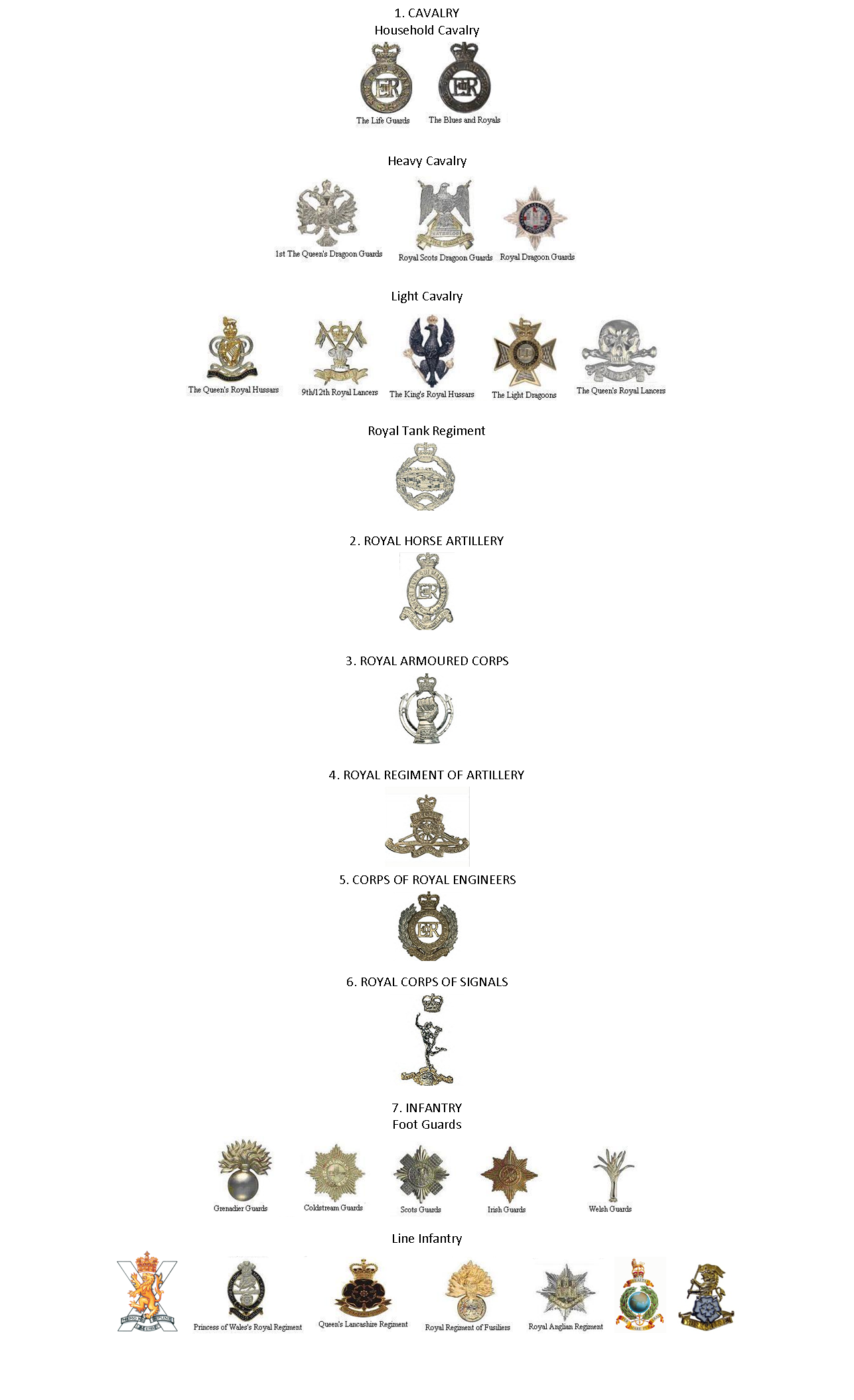| This Week’s Topic… | |

Best viewed in
|
Cap Badge Precedence A cap badge, also known as head badge or hat badge, is a badge worn on uniform headgear and distinguishes the wearer's nationality and/or organization. The wearing of cap badges is a convention commonly found among military and police forces, as well as uniformed civilian groups. Cap badges are a modern form of heraldry and the design of same generally incorporates highly symbolic devices. The concept of regimental badges appears to have originated with the British Army. The cap badge is positioned differently depending on the form of headdress:
Soldiers of the Gloucestershire Regiment and subsequently the Royal Gloucestershire, Berkshire and Wiltshire Regiment wore a cap badge on both the front and the rear of their headdress, a tradition maintained by soldiers in The Rifles when in service dress. The back badge is unique in the British Army and was awarded to the 28th Regiment of Foot for their actions at the Battle of Alexandria in 1801. Additional items that reflect a regiment's historical accomplishments, such as backing cloth and hackles, may be worn behind the cap badge. In Scottish regiments, for instance, it is a tradition for soldiers to wear their cap badges on a small square piece of their regimental tartans. Officer Cadets may wear a small white backing behind their badges. Members of arms such as the Adjutant General's Corps and Royal Electrical and Mechanical Engineers serving on attachment to other units often wear that regiment's beret or headdress but with their own Corps cap badge. For a period leading up to Remembrance Day artificial poppies are worn by many people in the United Kingdom and Canada to commemorate those killed in war. When worn in uniform the plastic stem of the poppy is discarded and the paper petals are fitted behind the beret badge where a metal cap badge is worn (On forage caps the paper petals are fitted under the left hand chin strap button. For the purposes of parading, the regular army of the British Army is listed according to an order of precedence. This is the order in which the various corps of the army parade, from right to left, with the unit at the extreme right being highest. Under ordinary circumstances, the Household Cavalry parades at the extreme right of the line. However, when on parade with its guns, it is the Royal Horse Artillery (usually in the form of the King's Troop) that goes to the right. Militia and Territorial Army Units take precedence after Regular units otherwise the Honorable Artillery Company and Royal Monmouthshire Royal Engineers would feature prominently being older than any Regular Regiments. Here then is the Order of Precedence and their associated cap badge:
|
